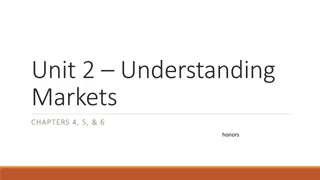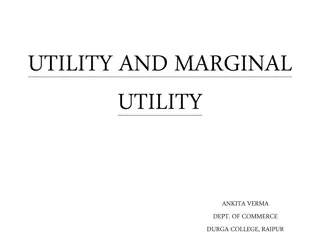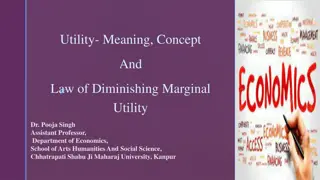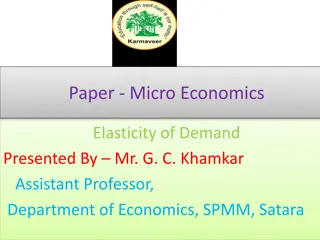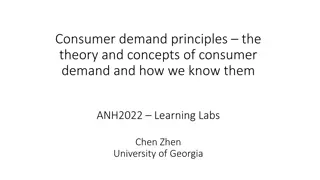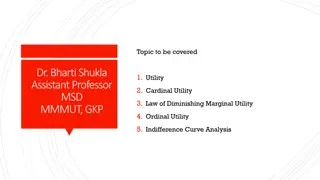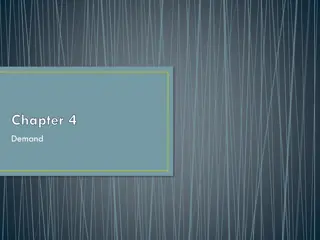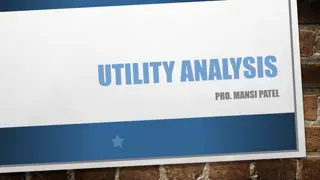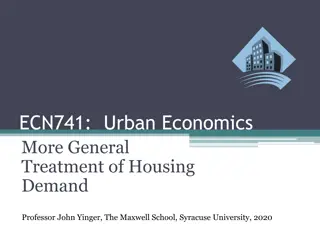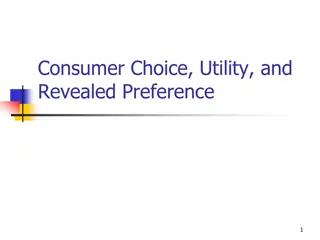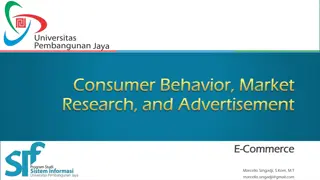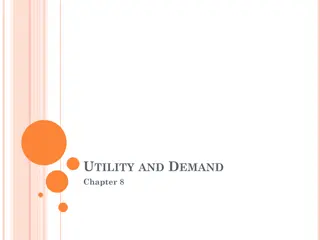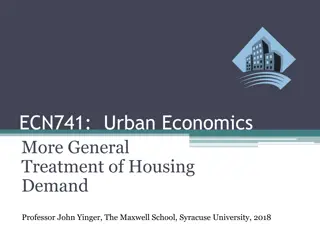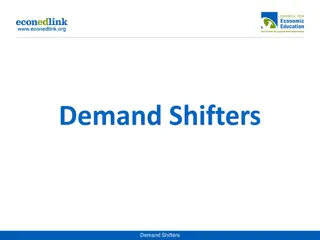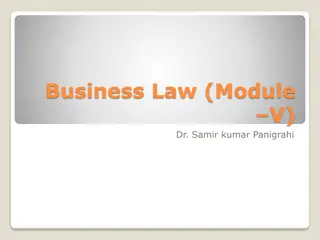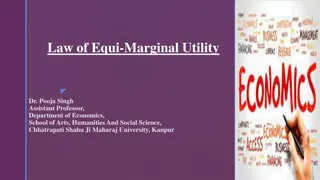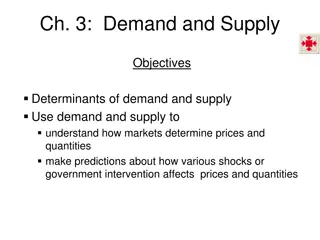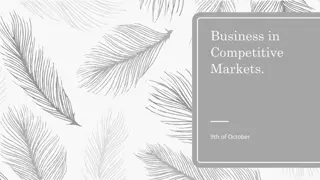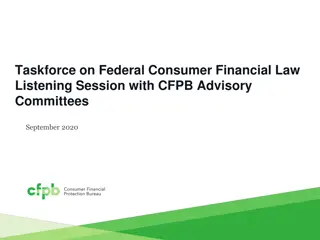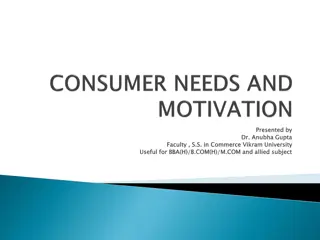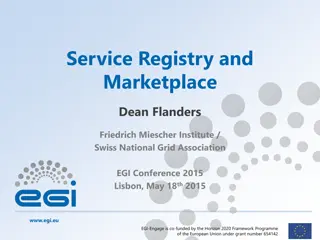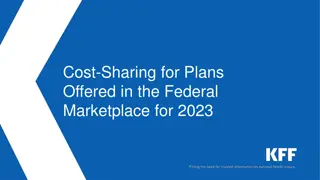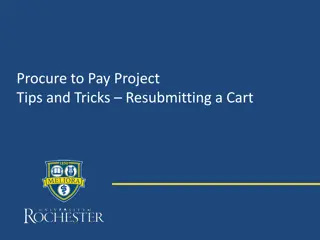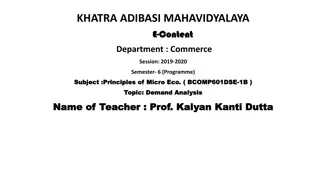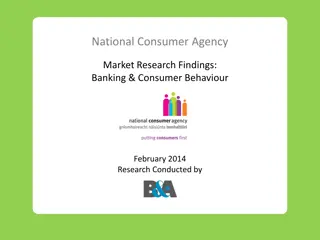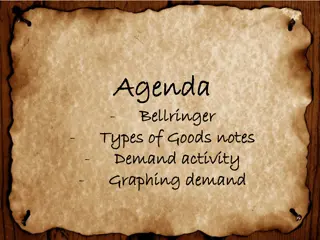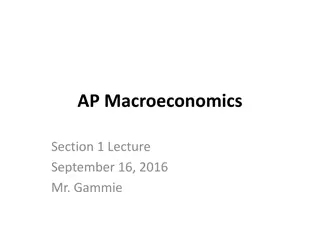Understanding Consumer Demand: From Utility Theory to Behavior in the Marketplace
We delve into the relationship between utility theory and consumer demand, exploring how individuals' tastes, preferences, and budget constraints influence their choices. Through examples like Neal's decision between snowboarding and jazz, we see how utility translates into demand curves, guiding consumer behavior in the market. By analyzing concepts like marginal utility, indifference curves, and willingness to substitute, we unveil the intricate connection between utility and demand in shaping consumer decisions.
Download Presentation

Please find below an Image/Link to download the presentation.
The content on the website is provided AS IS for your information and personal use only. It may not be sold, licensed, or shared on other websites without obtaining consent from the author. Download presentation by click this link. If you encounter any issues during the download, it is possible that the publisher has removed the file from their server.
E N D
Presentation Transcript
Quick Recap In part 1, we covered the following concepts: - Opportunity cost - Scarcity - Total utility and marginal utility - Diminishing marginal utility In Part 2, we will build on the concept of utility to derive consumer s demand
From Utility to Demand Utility theory is a useful way of analyzing how consumers make choices. But in the real world we do not observe consumer s utility, either total or marginal. Instead, his or her behaviour in the marketplace is observed through the demand curve. How are utility and demand related?
Roadmap: From Utility to Demand To answer the question How are utility and demand related? , we will follow this roadmap: a. Tastes, preferences and utility what s the connection? b. Our preferences maybe unlimited, but our budget is not c. Marginal utility vs. marginal utility per dollar
Tastes, Preferences and Utility What s the Connection? Let s use a textbook example of Neal choosing to attend jazz bars and go snowboarding Individual s utility is a measure of satisfaction an individual derives from goods and services Individual s choice of goods and services form a consumption bundle Neal will have several combinations of snowboarding and jazz that would yield him the same level of satisfaction (utility) In other words, Neal will be indifferent between some combinations of snowboarding and jazz as long as they yield the same level of utility
Our Tastes and Preferences are Unlimited Neal s preferences for snowboarding and jazz will be represented by the indifference curves. The higher is the indifference curve, the higher is Neal s satisfaction from a chosen consumption bundles.
Our Tastes and Preferences are Unlimited When Neal snowboards less, he is willing to give up less snowboarding than when he has a lot of it, in order to get the same additional amount of jazz. His willingness to substitute diminishes as he moves to the right along the indifference curve.
Tastes, Preferences and Utility What s the Connection? Our satisfaction (utility) is composed of tastes and preferences for goods and services. These tastes are captured by the indifference curves. The higher is the placement of the curve, the greater is our satisfaction from a chosen bundle of goods and services.
The Budget Constraint Consumer s budget constraint defines consumption possibilities given consumer s income and prices of goods and services. Neal has a monthly expenditure limit, or a budget constraint, which he chooses to spend on lift tickets and jazz club visits. Is it possible to consume beyond your budget constraint? If so, for how long?
Achieving Highest Level of Utility We are now in a position to examine how the consumer gets to the highest level of satisfaction possible. This is called optimization maximizing utility subject to the budget constraint.
Achieving Highest Level of Utility The highest possible level of satisfaction is attained, therefore, when the budget line touches an indifference curve at just a single point where the constraint is tangent to the indifference curve. Why is it that the consumer cannot choose a consumption bundle within the budget constraint?
Spending the Marginal Dollar When deciding to purchase a good, a consumer weighs the additional utility to be derived from the good against the additional cost (price) of the good. Consumer needs to consider two factors his marginal utility in relation to the price This means the consumer will base his decision on the marginal utility per dollar If the price of a good rises, the marginal utility per dollar of that good falls and gives the consumer an incentive to consumer fewer units of the good.
From Utility to Demand Previous slide confirms the Law of Demand: If the price of the good rises, individual will consume less of that good, that is the quantity demanded of that good falls. This is because with a higher price, individual gets less utility of that good at the margin, or his marginal utility per dollar falls.
Demand Curve Demand curve is downward sloping because as price falls, quantity demanded rises.
Factors Affecting Demand Quantity Demanded vs. Demand when do use which term? Quantity demanded changes only with the change in price. As price increases (decreases), quantity demanded falls (rises). Demand changes in response to changes in: Prices of related goods Tastes Income Population Expectations Review a word document on UR courses factors that affect demand
Learning Outcomes Utility theory: tastes, preferences and indifference curves Budget constraints Optimization Consumer s demand: law of demand, factors affecting demand


